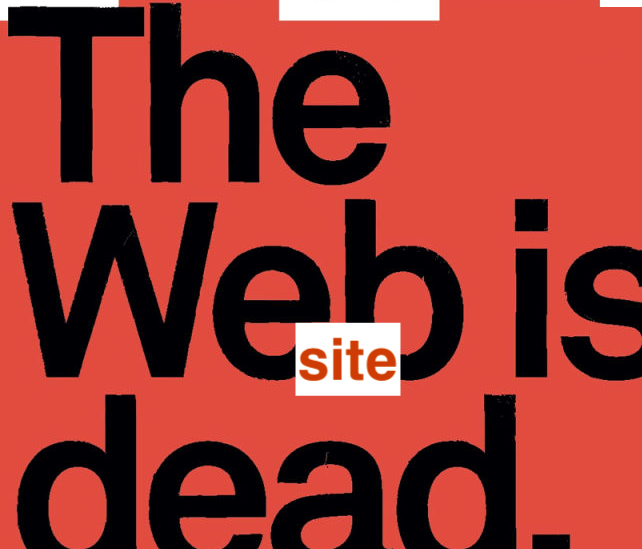In August we published an article about empowerment of female talent in Indian music. Scanning current projects by activists like Fembot5 plus new programs launched by institutions like Synthfarm (Kolkata), The Wild City (New Delhi), Better India (Mumbai), Padhmanabh (Bangalore) and Care India. To an extent, the globally engaging issue of gender imbalance has finally hit the shores of mainstream culture in India. Better late than never? The #metoo campaign is just about rearing it's head in India, where rampant discrimination and abuse of women exists - inside Bollywood, entertainment and media industry but majorly internalised and hushed-up or at best 'scandalised' by the tabloids. Online media in India is currently abuzz with various independent voices raising the issue of women's rights, security and participation. Singing and dancing girls and top hats of the media industry seen on TV are not going to change anything, in any nation. The gender imbalance and lack of empathy exists in many forms depending on class, involved economics and balance of gender itself in all small and large institutions. The most recent example of such violation and suppression is seen in the detailed expose of OML's litany of abusive incidents against women working in the company.
Most popular artists, singers and musicians in India are aloof or silent about #metoo and about the need for empowerment in India. However the real action is at the margins. Regional and unconnected efforts are springing up in urban India in ways not seen before. The Fembot5 initiative is the first-of-it's-kind raising awareness, recording narratives, busting myths and moving towards the creation of a 'Sisterhood of Artists' in India. However beyond the advocacy, activism and all the available data, we are expecting real change and action. The participation of women in Indian music, be it pop, indie, rock, electronica, jazz including DJs remains abjectly low and the growth rate meagre. The female sector of artists is dominated by upper-class good-looking english-speaking industry-approved divas. Question being, what do these privileged women offer to those thousands who are not-so-fortunate ? European institutions, festivals, agencies and activists [with big out-reach and budgets] are mostly mute or ignorant about the scope and situation in India. Post 2010, many institutions and festivals in the EU are finally opening doors to gender equality and diversity. Yet beyond the doors and conferences, we witness the succession of 'cherry-picking' exotic stereotypes available and emerging within Europe. An 'internalised' culture of exclusivity and privilege persists.
The issue remains clearly complex and 'hard to measure' in India, embedded with varying opinions, mostly ignored or dealt with at a token level by the government and private sector. In India, we find a complete lack of research and policy making in this field. However the potential is simply massive when viewed as data via research. The size and span which points to a vast untapped unheard part of Indian society. No 'Occam's Razor' available for this vast demographic of female talent and representation yet. Take a look at some of the emerging data and information.
Fembot5 Extract : In India, less than 2% of literate women [approx: 430 million] are artists, curators, singers, dancers, painters, musicians, DJs and related professionals. Yet that very micro-minority [DISPROPORTIONATE] holds immense potential, voices with ‘power’ and a big ‘human resource’. Data and research show us – approx 0.2% of 662 million women [female population in India] = 1.3 million [approximate number of women who are engaged full-time or part-time in culture production, the arts and related professions] in India. As of now, there are none women’s artist unions or dedicated [female] music institutions in India ➞ The need for education, awareness, empowerment programs and funding is vital to fight gender-inequality in any society. India has faired very badly (given the huge size of the industry and population) in creating credible change. We can gradually change any state of mass inequality and non-inclusion with public awareness, policy, funding and action. It may take a while, yet it empowers women across society. "Change which aims horizontally instead of vertically" Read Full Article Here
➞ 2019 onwards the Audio Pervert Blog pledges to dedicate 50% of it's future content to female artists, activism, music, composers, showcases and related content. Part of the 'Inclusion Rider Initiative' being launched by Fembot5 across India next year.
Most popular artists, singers and musicians in India are aloof or silent about #metoo and about the need for empowerment in India. However the real action is at the margins. Regional and unconnected efforts are springing up in urban India in ways not seen before. The Fembot5 initiative is the first-of-it's-kind raising awareness, recording narratives, busting myths and moving towards the creation of a 'Sisterhood of Artists' in India. However beyond the advocacy, activism and all the available data, we are expecting real change and action. The participation of women in Indian music, be it pop, indie, rock, electronica, jazz including DJs remains abjectly low and the growth rate meagre. The female sector of artists is dominated by upper-class good-looking english-speaking industry-approved divas. Question being, what do these privileged women offer to those thousands who are not-so-fortunate ? European institutions, festivals, agencies and activists [with big out-reach and budgets] are mostly mute or ignorant about the scope and situation in India. Post 2010, many institutions and festivals in the EU are finally opening doors to gender equality and diversity. Yet beyond the doors and conferences, we witness the succession of 'cherry-picking' exotic stereotypes available and emerging within Europe. An 'internalised' culture of exclusivity and privilege persists.
The issue remains clearly complex and 'hard to measure' in India, embedded with varying opinions, mostly ignored or dealt with at a token level by the government and private sector. In India, we find a complete lack of research and policy making in this field. However the potential is simply massive when viewed as data via research. The size and span which points to a vast untapped unheard part of Indian society. No 'Occam's Razor' available for this vast demographic of female talent and representation yet. Take a look at some of the emerging data and information.
On a subjective note based on popular media, online rants and industry speculation, the rise of female talent in bollywood is ‘real’ and more aspiring than ever. The recent years are witness to a slew of new female composers, producers, singers, voice artists in Bollywood. However 90% of these women belong to influential or rich families. What about those who are not? Looking objectively, scratching deeper beyond the surface we find varying points of view. Speaking to Vishal Dadlani, eminent public activist, rocker and music director (with dozens of bollywood hits to his credit- the last 15 years) the gender imbalance persists- “Female voices are now restricted to perhaps a few lines in a couple of songs, in most films. Even in films with female protagonists, sometimes. We always try and flow against that tide as far as possible, and are usually faced with no objections, but we don't do more than a film or two per year, so what we do makes no real statistical difference”. Mahua Sen, a painter, singer, producer and editor based in New Delhi points to a larger imbalance as she states “I am not a Bollywood musician and yet as an outsider I don’t think much has changed. I am assuming that this discourse is an attempt to highlight and explore the female position in entertainment music business. The most pertinent part of my view is – female objectification. I do take interest, however disdainfully, at how certain prerequisites are subtly inherent to the identity of a female artiste. Be it as an actress, singer, model or pop star “ Ritnika Nayan Srivastava, based in New Delhi who runs Music Gets Me High (an emerging artist management agency and production house) speaks with given experience in the business - “there are way more women in the indie and rock music scene now than what was the case 15 years ago. Be it the north-east or the metropoles like New Delhi, Bangalore and Kolkata. Bollywood’s music professionals could pay attention to that fact first“. Research student studying policy formation of women's rights, Rakesh Tandon, based in Pune adds "the subject of gender bias in music is a part of a larger problem: which institutions, policy, government and the private sector have failed to address in an horizontal manner. Indian society at large seems besotted with the idea of vertical growth. The age-old customs and traditions play a big role in preventing reforms and changes in many sectors". Change as we see in some EU nations and North America, where women's participation in mainstream and underground culture is on a visible rise. The situation is India is albeit different to EU or North America , yet certain stark similarities emerge. “As a society we are uncomfortable to see women in positions of power. It’s not just the men who find such an idea preposterous. Is it simply all about sexism? No, you have to work hard if you want to be boss. Remember positions of power are fiercely guarded or fought over regardless of sex and race … and don’t get into online pissing contests.” Charlotte Church, Child Singer, DJ and Activist, UK.
Fembot5 Extract : In India, less than 2% of literate women [approx: 430 million] are artists, curators, singers, dancers, painters, musicians, DJs and related professionals. Yet that very micro-minority [DISPROPORTIONATE] holds immense potential, voices with ‘power’ and a big ‘human resource’. Data and research show us – approx 0.2% of 662 million women [female population in India] = 1.3 million [approximate number of women who are engaged full-time or part-time in culture production, the arts and related professions] in India. As of now, there are none women’s artist unions or dedicated [female] music institutions in India ➞ The need for education, awareness, empowerment programs and funding is vital to fight gender-inequality in any society. India has faired very badly (given the huge size of the industry and population) in creating credible change. We can gradually change any state of mass inequality and non-inclusion with public awareness, policy, funding and action. It may take a while, yet it empowers women across society. "Change which aims horizontally instead of vertically" Read Full Article Here
➞ 2019 onwards the Audio Pervert Blog pledges to dedicate 50% of it's future content to female artists, activism, music, composers, showcases and related content. Part of the 'Inclusion Rider Initiative' being launched by Fembot5 across India next year.































0 -